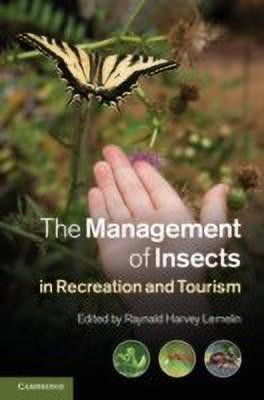The Management of Insects in Recreation and Tourism(English, Hardcover, unknown)
Quick Overview
Product Price Comparison
Insects such as cockroaches, mosquitoes and bed-bugs are usually not highly sought amongst travellers or recreationists, yet each year, collectors, butterfly enthusiasts, dragonfly-hunters and apiarists collect, visit, document and raise insects for recreational purposes. Illustrating a range of human-insect encounters from an interdisciplinary perspective, this book provides the first insight into the booming industry of insect recreation. Case studies and examples demonstrate the appeal of insects, ranging from the captivating beauty of butterflies to the curious fascination of locust swarms, and challenge the notion that animals lacking anthropomorphic features hold little or no interest for humans. Throughout the book, the emphasis is on the innovators, the educators, the dedicated researchers and activists who, through collaboration across fields ranging from entomology to sociology and anthropology, have brought insects from the recreational fringes to the forefront of many conservation and leisure initiatives. Table of Contents List of contributors 1. Introduction Part I. Human-Insect Encounters: 2. Minding insects: scale, value, world 3. The philosophical and psychological dimensions of insects: tourism, horror and the negative sublime 4. Tiger beetles: lessons in natural history, conservation, and the rise of amateur involvement 5. A is for agriculture, B is for bee, C is for colony-collapse disorder, P is for pollinator parks: an A to Z overview of what insect conservationists can learn from bees 6. The entomological and recreational aspects of interacting with Lepidoptera 7. Dragonflies: their lives, our lives, from ponds to reserves Part II. Insects and Leisure: 8. Relating to aquatic insects: becoming English fly fishers 9. An appreciation for the natural world through collecting, owning, and observing insects 10. Gardening and landscape modification: butterfly gardens 11. The role of edible insects in human recreation and tourism Part III. Insects and Tourism: 12. Butterfly conservatories, butterfly ranches and insectariums: generating income while promoting social and environmental justice 13. Insect festivals: celebrating and fostering human-insect interactions 14. Glow-worm tourism in Australia and New Zealand: commodifying and conserving charismatic micro-fauna Part IV. Conservation Frontiers: 15. May you live in interesting times: technology and entomology 16. Citizen science and insect conservation 17. The institutionalization of insect welfare: the cultural aspects of establishing a new organization dedicated to conserving invertebrates 18. Insects in education: creating tolerance for some of the world's smallest citizens 19. Discovering the wilderness in parks and protected areas 20. Conclusion Index.


